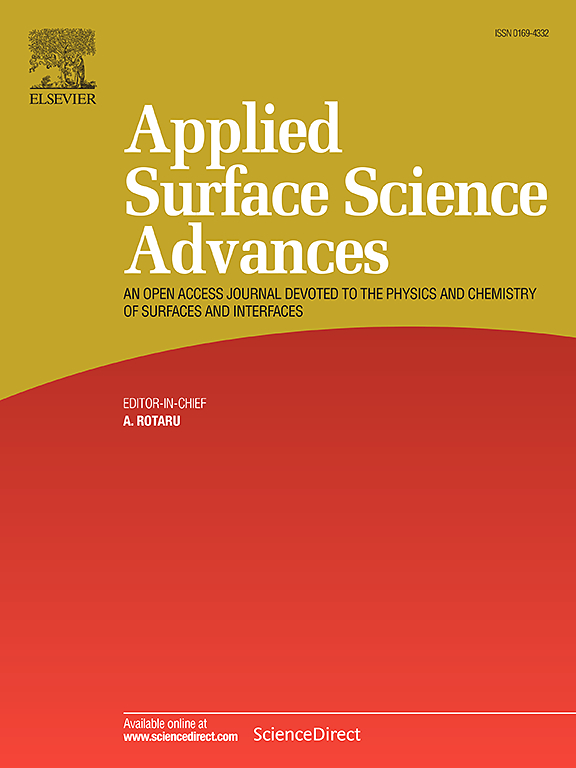Mitigating hydrogen-related instabilities in oxide thin-film transistor via nitrogen-engineered passivation layer for thermal stability
IF 8.7
Q1 CHEMISTRY, PHYSICAL
引用次数: 0
Abstract
In conventional dynamic random-access memory (DRAM) processes, hydrogen-rich SiH4-based dielectrics such as SiO2, SiNX, or SiCOH are widely used for defect passivation and performance enhancement in silicon-based cell transistors. However, when applied to amorphous indium-gallium-zinc oxide (a-IGZO) channel, hydrogen induces anomalous, non-monotonic Vth shifts and degrades reliability by weakening the channel’s bonding structure. Here, a novel technique is reported using the SiON and nitrogen dioxide plasma treatment layer (SNL) for the passivation layer. The SNL technique reduces hydrogen incorporation in the passivation layer and impedes hydrogen diffusion pathways through nitrogen doping within the channel layer simultaneously. As a result, compared to conventional thin-film transistors (TFTs), the SNL TFTs exhibited significantly improved breakdown voltages (from 90 to 177 V), reduced threshold voltage shifts under positive/negative bias temperature and illumination stress (PBTS/NBTiS) conditions (from −177 to −18 mV, and from −9.36 to −4.64 V) for 11 h. They markedly suppressed transient current deviation during transient current stress (TCS) measurements—from 1.42 % to 0.23 % after high-current stress and from 1.27 % to 0.10 % after low-current stress—indicating reduced hydrogen-related shallow trapping. Furthermore, the SNL structure effectively suppresses hydrogen-induced channel edge encroachment (ΔL) due to thermal stress, limiting the increase to only 0.11 μm (i.e., from 1.81 μm to 1.92 μm).
通过氮工程钝化层来降低氧化物薄膜晶体管中氢相关的不稳定性
在传统的动态随机存取存储器(DRAM)工艺中,富氢sih4基介电材料如SiO2、SiNX或SiCOH被广泛用于硅基电池晶体管的缺陷钝化和性能增强。然而,当应用于非晶铟镓锌氧化物(a-IGZO)通道时,氢会通过削弱通道的键合结构而引起异常、非单调的Vth位移并降低可靠性。本文报道了一种采用二氧化氮等离子体处理层(SNL)作为钝化层的新技术。SNL技术减少了钝化层中氢的掺入,同时阻碍了氢通过通道层内氮掺杂的扩散途径。结果表明,与传统薄膜晶体管(TFTs)相比,SNL薄膜晶体管在正/负偏置温度和光照应力(PBTS/NBTiS)条件下的击穿电压显著提高(从90 V到177 V),阈值电压偏移减少(从- 177 mV到- 18 mV),在瞬态电流应力(TCS)测量期间,它们显著抑制了瞬态电流偏差——在高电流应力后从1.42%降至0.23%,在低电流应力后从1.27%降至0.10%——这表明氢相关的浅俘获减少了。此外,SNL结构有效抑制了由热应力引起的氢诱导通道边缘侵蚀(ΔL),将通道边缘的增加限制在0.11 μm(即从1.81 μm增加到1.92 μm)。
本文章由计算机程序翻译,如有差异,请以英文原文为准。
求助全文
约1分钟内获得全文
求助全文

 求助内容:
求助内容: 应助结果提醒方式:
应助结果提醒方式:


